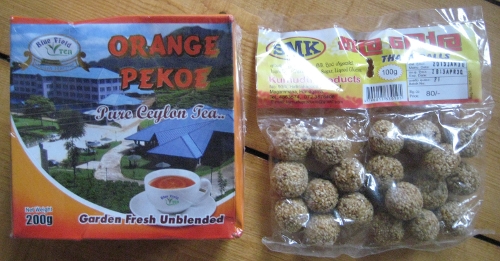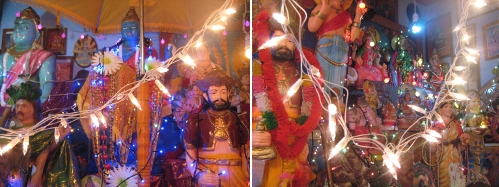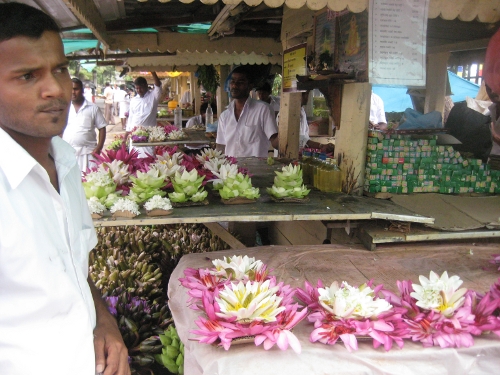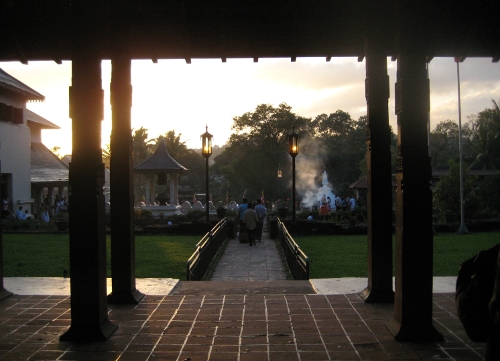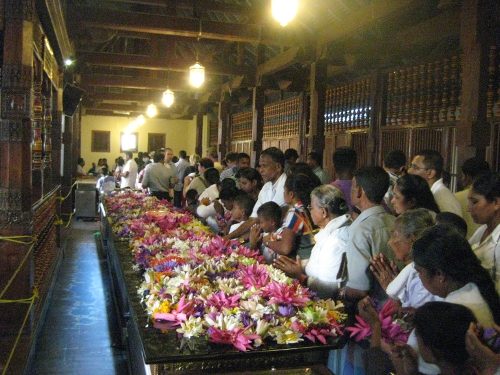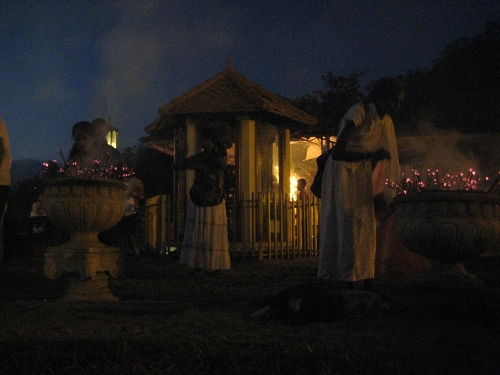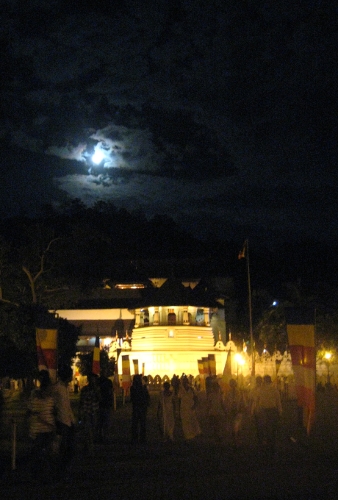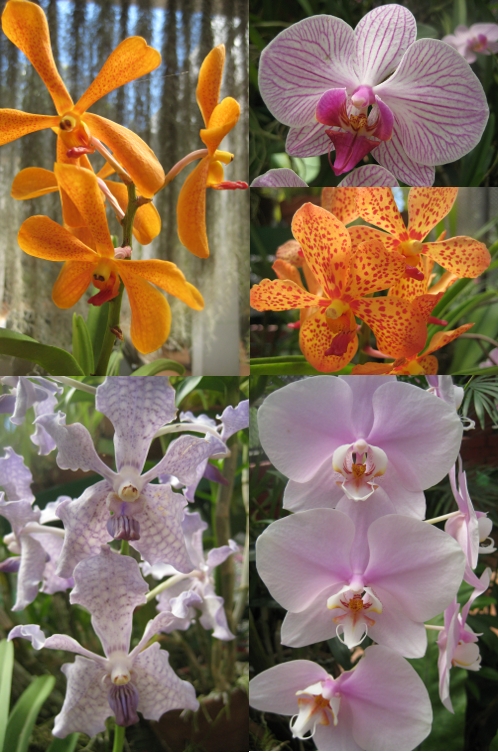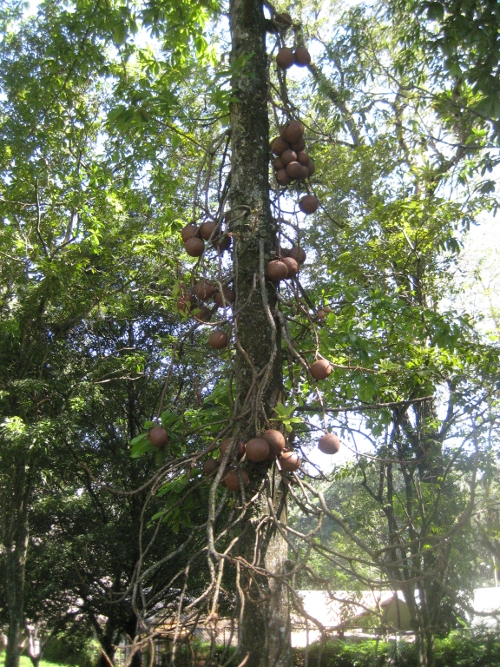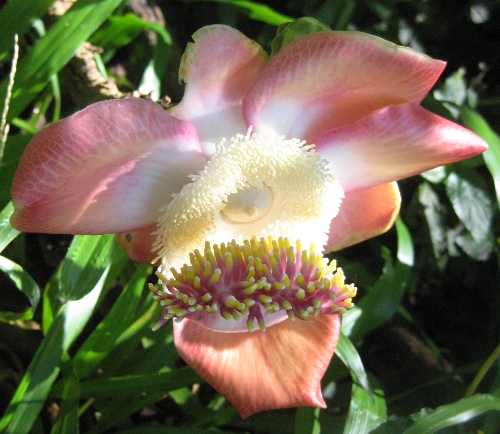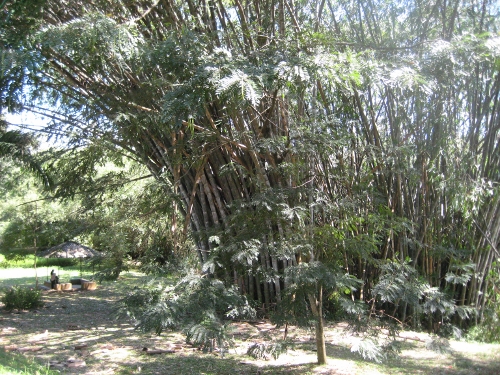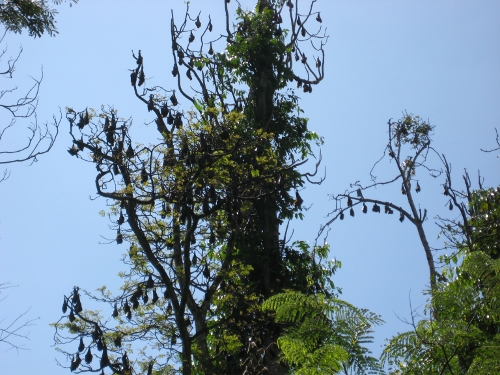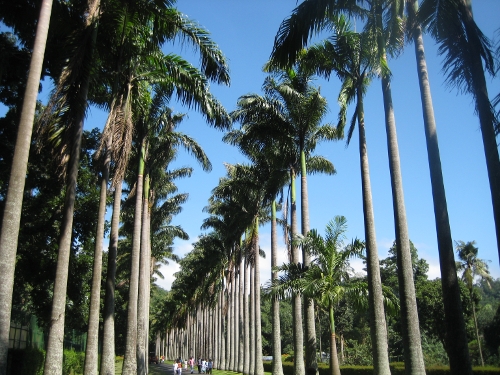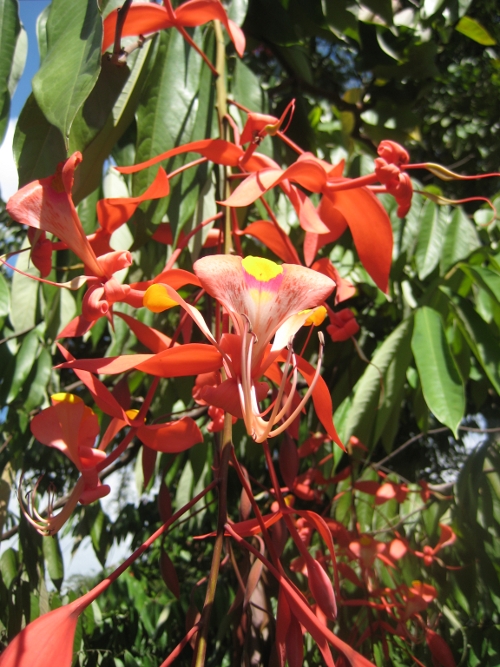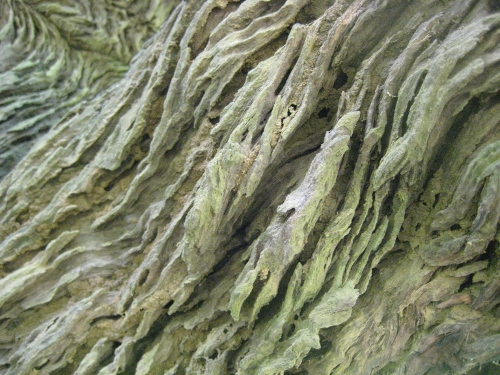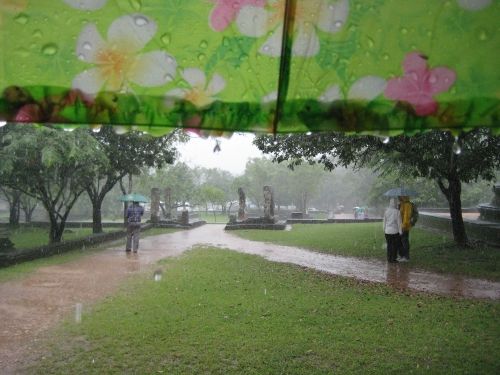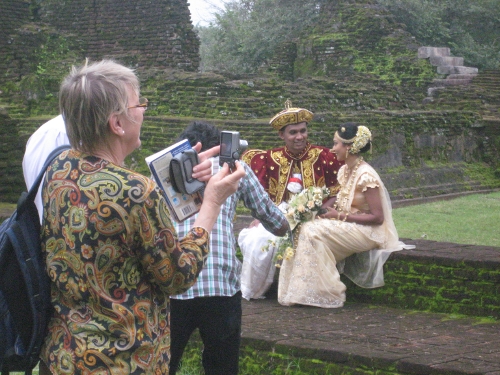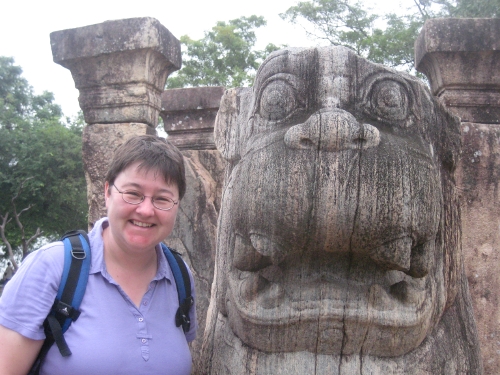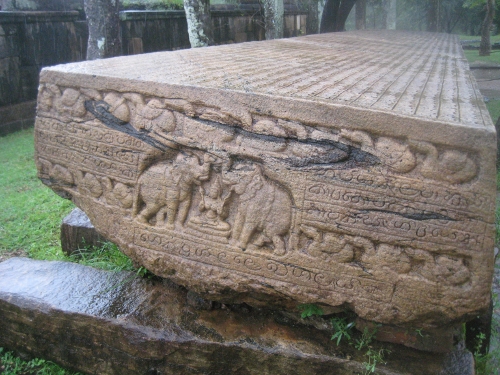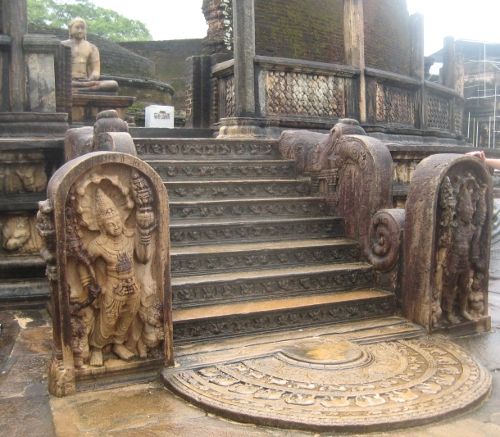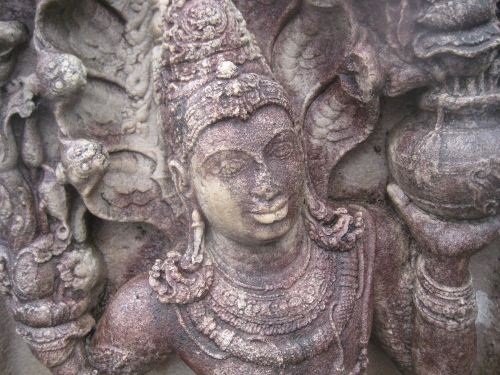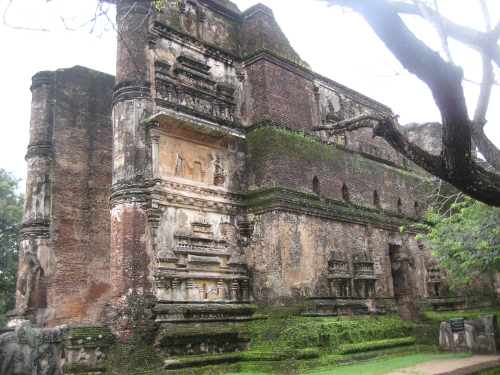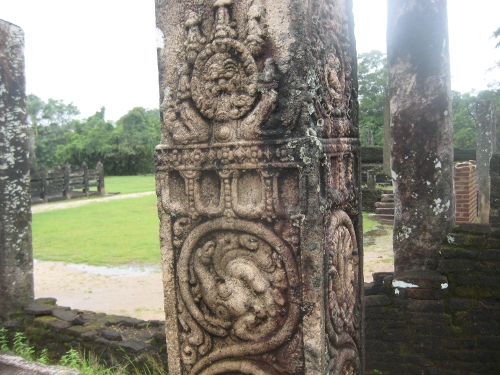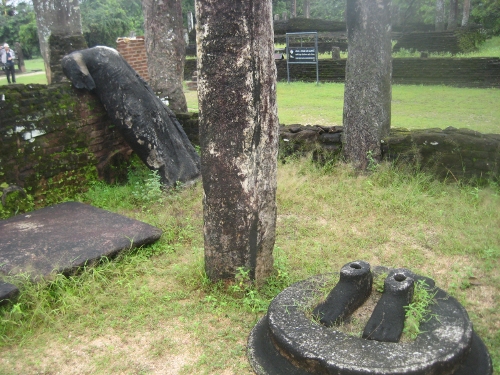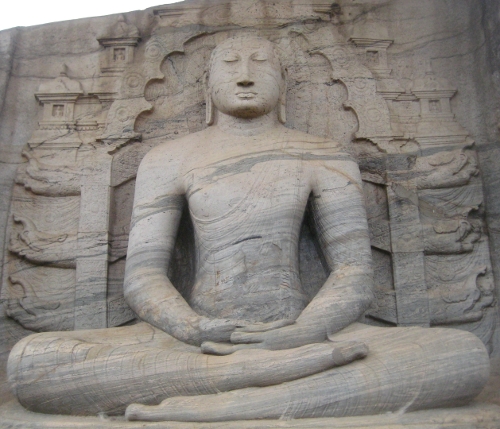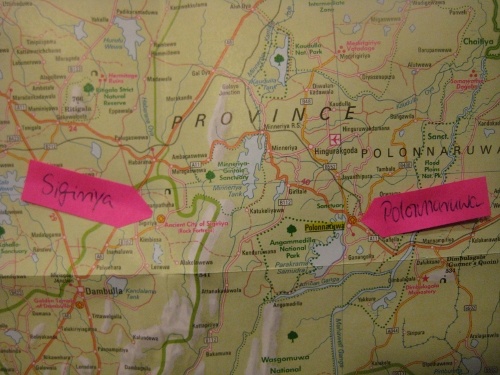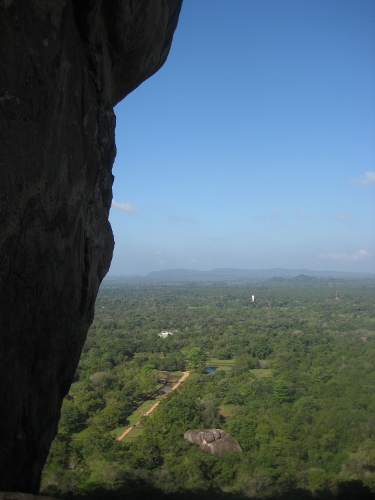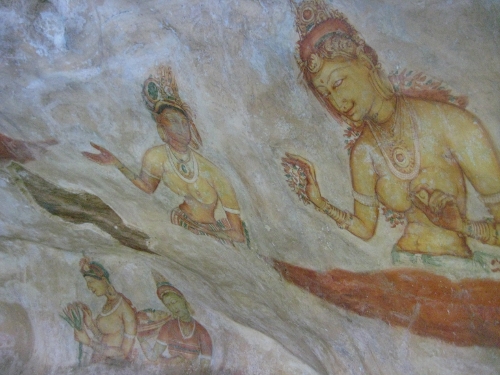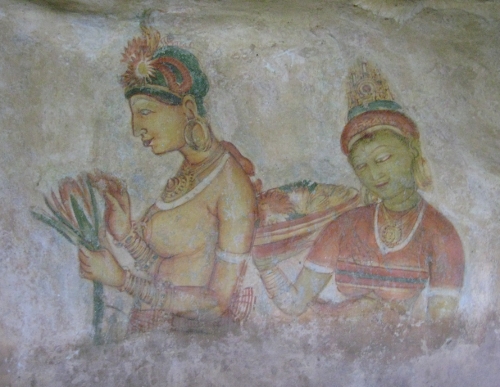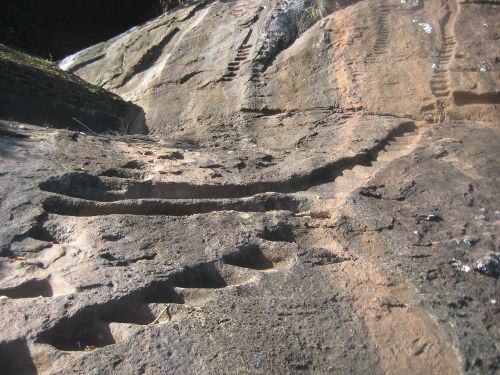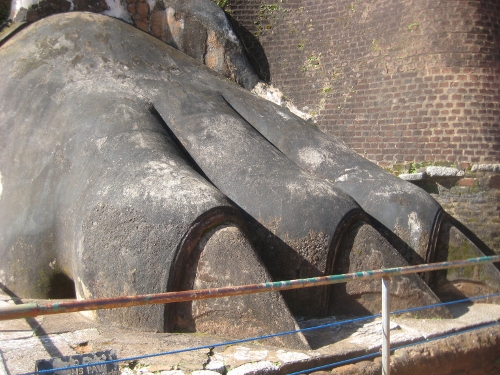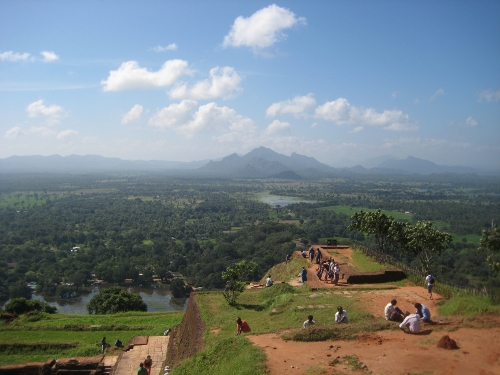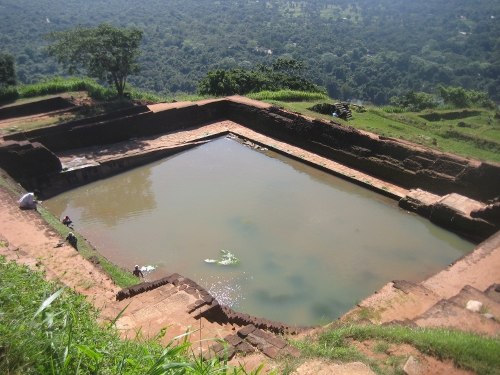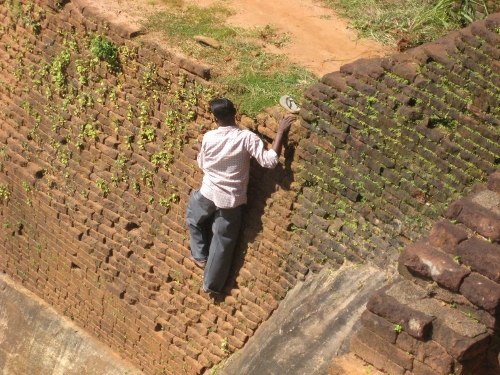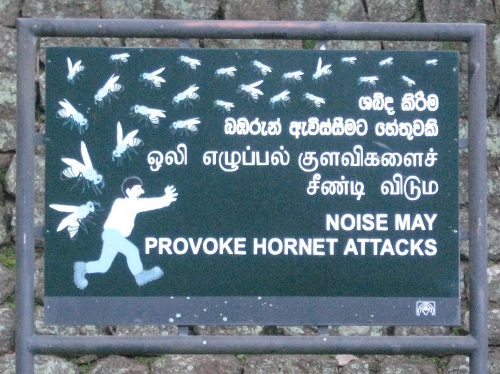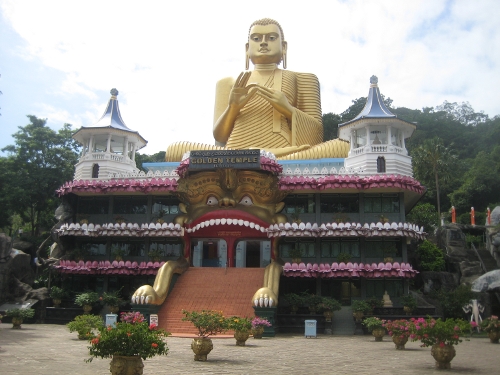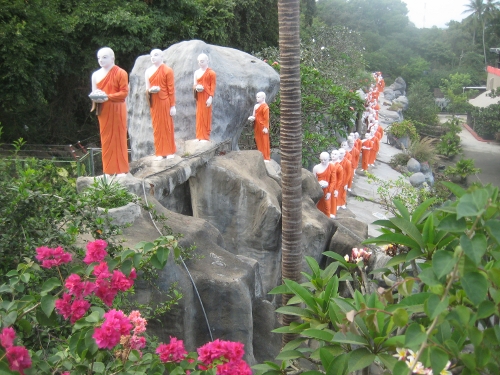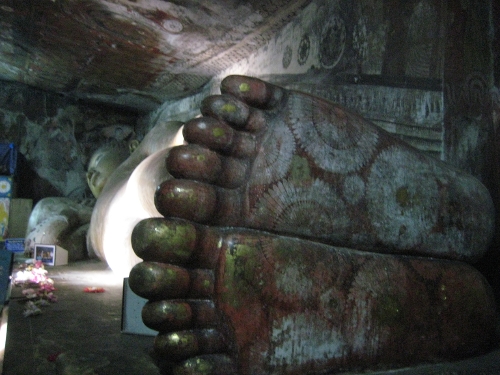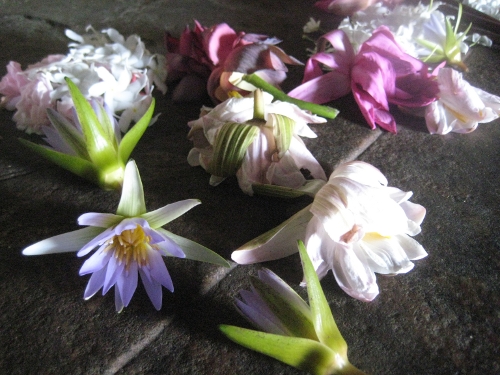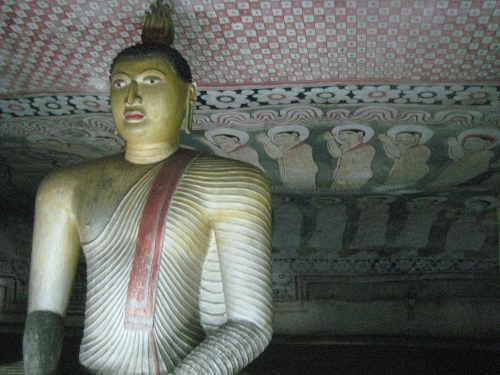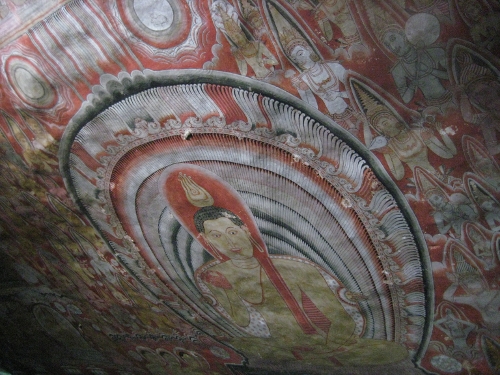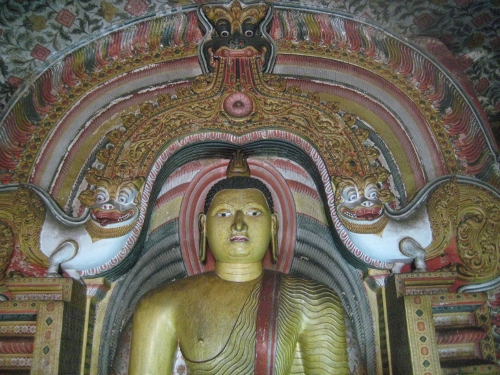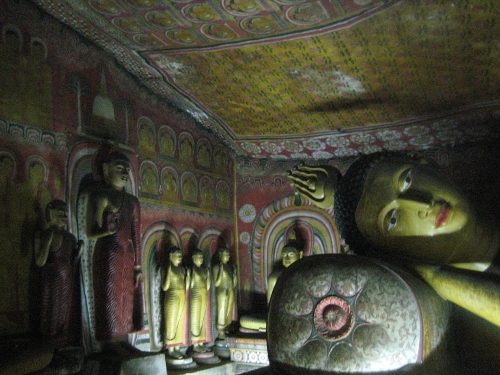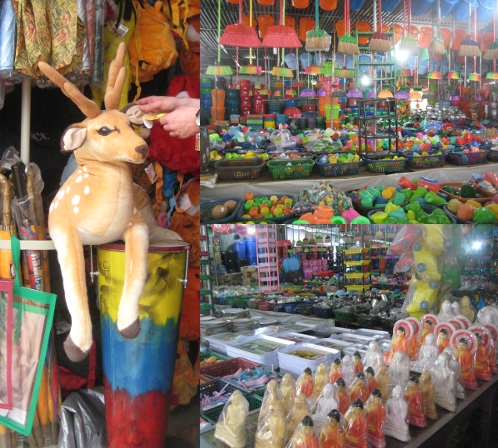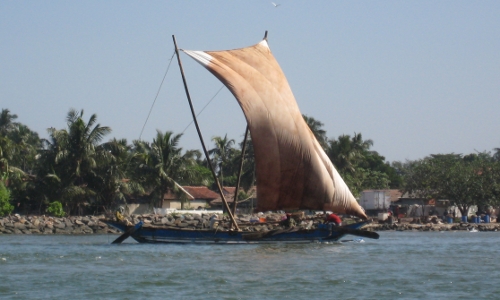Nuwara Eliya is easily pronounced: Nurelia. It’s high up in the mountains – no other city in Sri Lanka is located on a higher elevation. And it still has a very British look… There’s the 18-hole golf course established in 1889 and an even older track for horse racing. And the climate was gorgeous: like a summer in the Eifel without humidity. I can see why the British would have made this their preferred summer destination.
Hier war und ist bis heute das Zentrum der Teeproduktion. Schon am nahegelegenen Bahnhof in Nanu Oya nahm uns ein freundlicher Herr in Empfang der uns auch gleich eine Tour noch für den gleichen Nachmittag anbot. Und weil wir leider nicht so wirklich Zeit für diesen Ort eingeplant hatten, sind wir da auch nach einigen Verhandlungen drauf eingegangen – und haben es nicht bereut.
This was and still is the center of the tea production. When we arrived at Nanu Oya train station nearby a friendly man welcomed us and offered a tour of the area that same afternoon. And as we hadn’t really planned in much time for Nuwara Eliya we agreed on it after some brief negotiations – and did not regret it.
Da es ein Sonntag war, haben wir in den Teeplantagen niemanden arbeiten sehen. Die Teepflückerinnen sind in einer Gewerkschaft organisiert, so dass auch die Arbeitszeiten und Pausen geregelt sind. Es bleibt aber ein Knochenjob: in den täglich 8 Stunden muss jeder laut Auskunft in der besuchten Teefabrik 20kg Teeblätter ernten. Erntet man mehr, gibt es einen Bonus.
As it was a Sunday, we did not get to see any tea pickers. The ladies are in a union so that working hours and rest times are controlled. Nevertheless, the work remains back-breaking: we were told at the tea factory that we visited that every picker needs to deliver 20kg (about 45 lbs.) per 8-hour picking day. If you harvest more, you get a bonus.
Wenn der Tee geerntet ist, geht der Prozess erstaunlich schnell. Ich hatte mit einigen Tagen gerechnet, aber alles in allem läuft das wohl in gut 24 Stunden. Erst wird er in diesen langen Trögen (auf dem Bild unten sind 2500 kg Teeblätter zu sehen) getrocknet oder gewelkt, dann geht es zu Sieben, Zerkleinerung, Fermentierung und dann noch zu einem 21-minütigen Trocknungsprozesses. Die Fabriken sehen alle gleich aus und war im Fall der besuchten Mount Harrow Tea Factory der Blue Field Tea Gardens immer noch originalbestückt aus dem 19. Jahrhundert, was die Maschinen angeht.
Once the tea is picked the process is amazingly fast. I had thought it would take a number of days to make the final product but it is in fact a matter of about 24 hours. The leaves are first withered in these huge troughs (you see about 2,500 kg / 5,500 lbs on the picture below) and then move on to be sieved, crushed, fermented and dried at a certain temperature for 21 minutes. These factories all look the same and in the case of Mount Harrow Tea Factory of Blue Field Tea Gardens which we visited, the machinery is still original from the 19th century.
Letztlich kommt dann alles in große Container und wird nach Colombo zur Tee-Börse kutschiert, dort meist bietend verkauft und dann auch endverpackt. Das ganze Gebiet ist wahnsinnig pittoresk und größtenteils unverbaut. Das ist aber wohl in einer Änderung begriffen – was auch nicht verwundert, wenn man den Blick, den wir von der Terrasse eines im Rohbau befindlichen Restaurants hatten, genießt. Das Foto gibt die Stimmung nicht annähernd wieder.
The tea is then transported to Colombo in large containers and auctioned off at the tea exchange. After that it is packaged and sent off to wherever. The whole area is picturesque beyond imagination and so far there are few if any larger buildings to ruin it. But that is about to change – and you are in fact surprised it hasn’t happened much sooner when you see the view below. We were on the terrace of a new restaurant that is still only a shell. The picture only gives you a vague idea of the actual atmosphere. It was to die for.
Mit ein Grund für die verlangsamte touristische Erschließung mag die schlechte Erreichbarkeit sein… die Straße nach Nuwara Eliya gehört wohl zu den schlechtesten in Sri Lanka, hier ist Schrittgeschwindigkeit angesagt. Und wenn die Straßen asphaltiert sind, sind sie oft schmal und schlängeln sich entlang steil abfallender Berghänge.
I guess that one reason for the slow onset of tourism is the limited accessability. The road to Nuwara Eliya is among the worst in Sri Lanka – walking speed is advised. And even the roads that are asphalted are usually narrow and trail along steep hillsides.
Zurück in Nuwara Eliya haben wir uns noch einige Vegetable Rotis gegönnt: ein dickes Dreieck aus Teig, dass mit einer scharfen Kartoffel-Gemüse-Curry-Paste gefüllt ist. Die sind für mich jenseits von grenzwertig, was die Schärfe angeht, aber dennoch lecker – einfach wunderbar, wenn der Schmerz nachlässt. Und deswegen muss auch noch das Foto eines Meisters seines Fachs verewigt werden.
Back in Nuwara Eliya we indulged in some vegetable rotis: a bulky dough triangle filled with a very hot mix of potatoes, vegetables and curry. They are beyond what I can take spice-wise but still very yummy – marvellous, once the pain subsides. And that is why I’ve wanted to include a picture of a master of his craft.
Und zum guten Abschluss des Tee-Exkurses gibt es nun noch ein sri lankisches Freebie: ich verlose 200g Orange Pekoe Blue Field Tee und eine Packung unseres Lieblingssnacks: Thala Balls. Um zu gewinnen, hinterlasst bis 12. Februar 2013 um 12 Uhr MEZ einen Kommentar, indem ihr mitteilt, was euch am ehesten zu einer Reise nach Sri Lanka bewegen würde.
And now I will offer a little tea related blog candy from Sri Lanka: to win 200g of Orange Pekoe Blue Field tea and a package of our favorite Thala Balls snack leave a comment underneath this post letting us know what would most entice you to go on a trip to Sri Lanka (it closes at 12 noon GMT+1 on February 12, 2013).
Viel Glück!
Good luck!
Barbara









